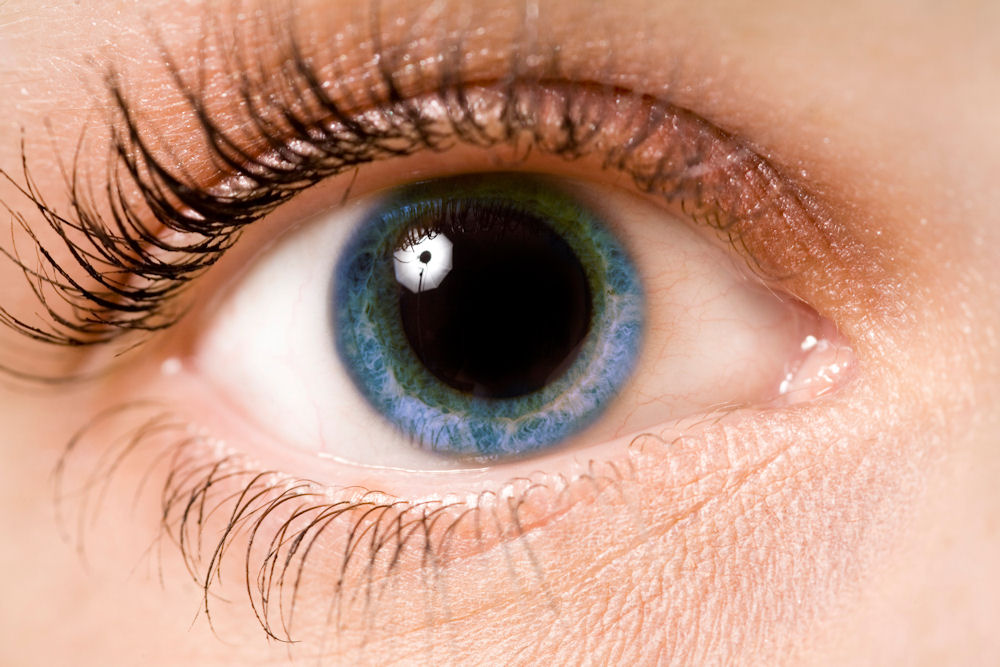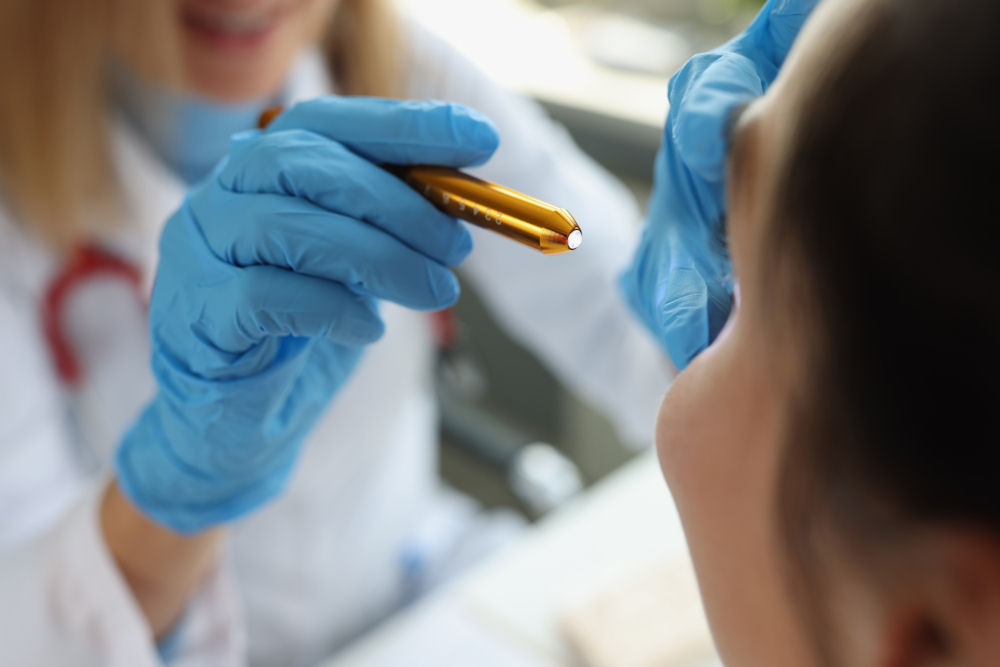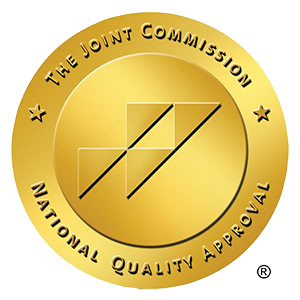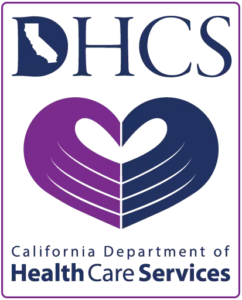It’s possible to tell if someone is using drugs by looking at their eyes. The eyes often show early and visible signs of drug use. Changes in the eyes can be one of the most noticeable clues when someone is struggling with substance use.
Drugs can cause the pupils to become either very small or very large. Some drugs may make the eyes appear red, glassy, or overly sensitive to light. In some cases, a person’s eyes might twitch, or they may have trouble focusing or keeping their eyes open. These changes are often quick to appear after drug use and can vary in intensity.
The type of substance used plays a big role in how the eyes are affected. For example, opioids like heroin often cause pinpoint pupils, while stimulants such as cocaine or meth can cause pupils to become very large. Alcohol and marijuana may cause red, bloodshot eyes. The method of use—whether the drug is smoked, swallowed, or injected—can also impact how severely the eyes are affected.
Long-term drug use can lead to lasting eye damage and even blindness. These eye-related signs can help doctors discover other hidden health problems caused by substance abuse. Drug use not only harms eye health—it can affect the entire body, leading to life-threatening issues like heart disease, stroke, or overdose.
At Surf City Detox in Huntington Beach, California, we approach addiction and mental illness with compassion and proven care. Our team provides personalized treatment that supports both recovery and long-term mental health. As a trusted detox center in Huntington Beach, CA, we offer a supportive environment where individuals can safely begin their recovery journey and address the full impact of substance abuse on the mind and body.
The Connection Between Substance Abuse and Eye Health
Substance abuse harms more than the brain or body—it also affects eye health. The eyes are linked to the body, so changes in them can show early warning signs. Drug and alcohol use can cause red eyes, vision changes, and even permanent damage.
These eye changes can also point to bigger health problems. People with substance use disorders often develop high blood pressure, diabetes, or liver disease. These conditions may show up in the eyes before other symptoms appear.
For example, diabetes can damage blood vessels in the eyes, while high blood pressure can cause bleeding or swelling. Long-term alcohol use can lead to liver damage, which may cause the eyes to turn yellow. Early detection through eye changes can help doctors treat these problems.
Regular eye exams and medical care are essential for addiction recovery. Paying attention to eye health helps identify overall well-being.
The nervous system controls how we move, think, and feel. It also helps the brain and eyes work together. When someone uses drugs, the nervous system can become overstimulated or slowed down. This affects how the eyes respond to light, motion, and focus.
Stimulants like cocaine can speed up nerve activity and make the eyes overreact. Depressants like opioids slow things down and make the eyes less responsive. Some drugs may even damage nerves that help control eye movement or vision. These changes can cause blurry vision, trouble focusing, or even vision loss.
Drugs that affect the brain also affect the eyes. The eyes are linked to the brain through the optic nerve, so changes in one can affect the other. When the brain is impacted by drugs, it often shows in how the eyes behave.
Substances can directly harm the eyes in several ways. Some drugs reduce blood flow to the eyes, which can damage tissue. Others cause inflammation or dryness, making the eyes uncomfortable or prone to infection.
Smoking substances, including tobacco or marijuana, can irritate the eyes and worsen existing conditions like glaucoma. Alcohol can lead to poor coordination in the eye muscles, causing blurred or double vision. Over time, heavy drinking can also damage the optic nerve, leading to lasting vision problems.
In severe cases, long-term drug use can result in permanent vision loss. Even short-term use can cause noticeable changes like redness, pupil size changes, or twitching. These are not just cosmetic issues—they reflect deeper problems in the body.
Taking care of the eyes means taking care of overall health. When someone stops using harmful substances, many of these eye problems can improve with time and treatment.
What Drugs Cause Dilated Pupils?
Some prescription drugs can cause dilated pupils, even when taken correctly. This can cause the pupil, the dark center of the eye, to expand more than usual. These changes often happen because the drugs affect how the brain communicates with the eyes. While not always dangerous, dilated pupils can be a sign of how the body is reacting to medication. Understanding what drugs cause dilated pupils can help you recognize potential signs of substance use or medication effects.
Here are some common prescription drugs that can cause dilated pupils:

- Stimulants (e.g., Adderall, Ritalin): These are used to treat ADHD and increase brain activity, which can enlarge the pupils.
- Antidepressants (e.g., SSRIs, SNRIs): These adjust brain chemicals and can affect the nervous system, leading to dilated pupils.
- Anticholinergics (e.g., Benztropine, Atropine): These relax certain muscles, including those in the eye, causing pupil dilation.
- Opioids (e.g., Tramadol in rare cases): While most opioids cause small pupils, a few can cause enlargement depending on dose and interaction.
- Muscle Relaxers and Sleep Aids (e.g., Cyclobenzaprine, Ambien): These can affect eye muscles and the brain’s signals, sometimes causing dilated pupils.
What Drugs Cause Red Eyes?
Red eyes are a common side effect of many drugs. This can happen when blood vessels in the eyes swell or burst. Marijuana is one of the most common drugs that causes red eyes. It lowers eye pressure and increases blood flow in the eyes.
Alcohol, cocaine, and meth can also cause red, irritated eyes. These substances can disrupt sleep, cause dehydration, and affect how blood flows in the body. Even prescription drugs, like sleeping pills or antidepressants, can lead to red eyes as a side effect.
If someone has frequent red eyes and other changes in behavior, it may be a sign of drug use or misuse.
Recognize the Signs: Pupil Dilation Drug Chart
Understanding how drugs affect the eyes can help you spot signs of substance use early. One useful tool is a pupil dilation chart. This chart shows how different drugs change the size of the pupils. It can help you notice if someone’s eyes look larger or smaller than normal.
Some drugs make pupils grow very large, while others make them shrink. A pupil dilation chart compares normal pupil size with changes caused by various substances. This helps people recognize signs of drug use with greater clarity and confidence.
Using a pupil dilation chart can be especially helpful for caregivers, teachers, and loved ones. It is not a diagnosis, but it can be a useful warning sign. Eye changes often happen quickly and can give clues about the type of drug used.
Commonly Misused Drugs and Their Effect on Pupils
Misused drugs often cause noticeable changes in the pupils. These changes depend on how the drug affects the nervous system. Dilated pupils and drugs often go hand-in-hand, especially with certain substances that affect the brain.
- Stimulants: Meth, ecstasy, and cocaine usually cause dilated pupils. These drugs increase brain activity, making the pupils expand.
- Opioids: Heroin, fentanyl, and prescription painkillers typically cause small, tight pupils, known as pinpoint pupils. This is a key overdose sign.
- Hallucinogens: LSD and magic mushrooms often cause very large pupils. This is due to their strong effects on the brain.
- Benzodiazepines and Alcohol: These may not always affect pupil size, but often cause eye drooping, redness, or slow eye movement.

Drug Addiction Treatment
Drug addiction is something that can be treated with the right support—it’s not a reflection of your worth. Many people recover with the right support and care. Treatment begins with understanding that change is possible, no matter how hard it may feel right now.
The first step for many is detox, which helps the body safely remove drugs. Detox is often needed because withdrawal symptoms can be uncomfortable or even dangerous. Medical supervision during detox makes the process safer and more manageable.
After detox, people often move into treatment programs. These programs offer structure, support, and a safe place to begin healing. Treatment can be inpatient, where a person stays at a facility, or outpatient, where they receive care while living at home.
Addiction counseling is a key part of recovery. It helps people understand the root causes of their drug use. Counseling also teaches healthy coping tools and builds stronger relationships with others. Many people feel relief and hope just by having someone listen and understand.
We Can Help Break the Cycle of Drug Abuse
At Surf City Detox, we know how hard it is to ask for help. You don’t have to face this journey alone—there’s always hope for change. We offer medical detox, personalized rehab programs, and mental health support in one safe, healing space. Our care is rooted in compassion, not judgment.
Our team listens, supports, and helps you build a future you feel proud of. Recovery starts with one small, brave step. If you or someone you love is struggling, reach out to us. Let Surf City Detox be part of your healing journey.
Dr. Eric Chaghouri is a 2007 graduate from the University of California, Los Angeles, where he earned his B. A. in Biology with Summa Cum Laude honors. While at UCLA, he helped the men’s varsity volleyball team earn a National Championship in 2006. He was named the UCLA Scholar-Athlete of the Year in 2007.
He earned his medical degree from the Keck School of Medicine in 2011. He completed his internship training in 2008 at Cedars-Sinai Medical Center and the remaining three years of residency in general adult psychiatry at the Los Angeles County and University of Southern California Medical Center. He served as the Chief Resident in psychiatric emergency services during his fourth year of residency. He also served as Resident Clinical Instructor and Volunteer Faculty in the Department of Psychiatry at the Keck School of Medicine.
After completing residency, Dr. Chaghouri accepted a fellowship position in forensic psychiatry at the prestigious USC Institute of Psychiatry and Law. His scholarly activities included publishing in Legal Digest and presenting research findings at the Keck School of Medicine annual conference.
Since completing his forensic psychiatry fellowship, he has established a successful and thriving practice in Southern California, focusing on treatment of co-occurring psychiatric and addictive disorders. He has developed a strong clinical team of practitioners who share similar goals and philosophies regarding psychiatric treatment, including providing cutting-edge interventional treatments for psychiatric conditions. He works in an array of capacities with attorneys, courts, and other parties in actual or potential litigation. He also has extensive experience consulting and providing opinions on psychiatric issues for major television networks. Dr. Chaghouri’s interests include addiction medicine, substance use disorders, forensic psychiatry, medical ethics, psychological autopsy, gender wellness, and evidence-based treatment of psychiatric conditions.



